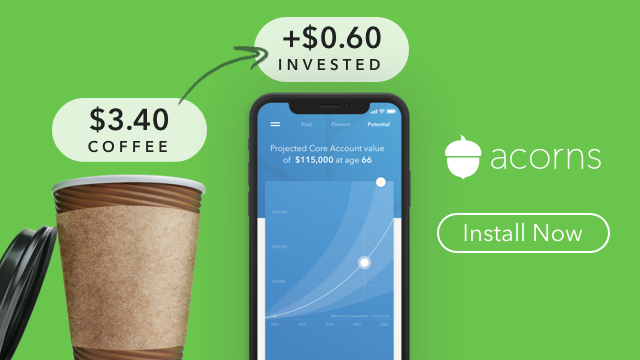Backdoor Roth IRA: Maximize Your Tax Bills and Contribute Beyond Limits on Your Retirement Savings
Retirement savings should be given premium attention, especially while an individual is still active and gainfully positioned to earn incomes. Platforms that enable people to plan for their retirement savings are erected by various institutions and organizations. Although most people may decide to run their retirement savings by themselves, it is most efficient and feasible if a professional person takes up the responsibility.
Since it requires expertise to walk away from the ugly future laid ahead, we need the assistance, support, and control of a professional institution to guide us out of the mire of frustrated retirement period. For this, such questions like, “How can I avert or ameliorate the tax burdens?” pops up in mind.
The answer to this question is IRA (Individual Retirement Account). The prospect of starting off an IRA is to allow people to save money for retirement at their own will, through a professional body, for retirement with an advantage over tax burdens. IRA is an individual account one can create a financial institution.
Benefits of IRA
There are three types of IRA, Traditional IRA, Roth IRA and Rollover IRA. All the three types have a common feature, which is tax-advantaged on retirement savings program. Traditional IRA and Roth IRA offers contributing investors an IRA grow tax-deferred, which means that you owe nothing on gains, provided your money remains in IRA. Secondly, IRAs state that investors are not allowed to make withdrawals from the IRA before retirement. But through IRS, individuals are permitted to take out money only on the conditions that their investor needs to pay for certain expenses that are excusable.
The Three Types of IRA
Generally, most articles recognize only the Traditional IRA and Roth IRA. However, this section will only take a look at what these two IRA is about. It will as well, take a cursory look at the third one that is least considered or starched in oblivion.
• Traditional IRA offers an annual tax-break. It is a good choice when considering the fact that you may likely face a higher rate of tax during your retirement period. Basically, Traditional IRA means that your annual contribution may be taxed at a lower rate. Also, unlike Roth IRA, anyone can contribute on Traditional IRA, and deductible amount is limited based on your income or on whether you and your spouse own access to a retirement plan at work.
• Roth IRA is a unique and an exclusive IRA program that only allows investment contributions with money an investor has already paid tax on. With this, your money has the tax-free growth potential coupled with tax-free withdrawals during retirement when necessary conditions are met. It is advisable to opt for a Roth IRA if you are operating a lower tax bracket than to accumulate it for the future.
• Rollover IRA requires transferring eligible assets from a plan sponsored by an employer – such as 401(k) or a 403(k) into an IRA.
Choosing either a traditional IRA or a Roth IRA has a common navigational destination. According to financial experts, it is estimated that retirees need up to 85% of their retirement investment income during retirement. This is because an employer’s savings scheme, such as 401(k) may not be sufficient to address one’s financial needs during retirement.
Considerably, a Roth IRA seems to have many advantages and attraction over Traditional IRA. The only hold-back may be on eligibility grounds, which may trigger such question as, “what can I do to equally enjoy the benefits of Roth IRA?” The answer is simply a backdoor Roth IRA.
Backdoor Roth IRA
A backdoor Roth IRA is a strategic conversion of Traditional IRA to Roth IRA. However, you cannot contribute directly to Roth IRA if you are beyond certain income limits. But there is no income limit when converting from Traditional IRA to Roth IRA.
At present, anyone can convert or rollover money from a Traditional IRA to Roth IRA irrespective of the amount they earn. This option is not a tax evasion because you must have paid taxes on Traditional IRA before conversion, and the process may require higher tax brackets at times.
Conversion can be done in two ways; either by converting an entire Traditional IRA to a Roth IRA, or you contribute to an active Traditional IRA, sell shares, then do a rollover to Roth IRA through the help of your bank or broker.
Why Adopt The Backdoor Roth IRA?
Due to the higher benefits attached to Roth IRA conversion from Traditional IRA to Roth IRA has become common. The advantage of backdoor Roth IRA are as follows:
• Though the Roth IRA has an income limit, this limit (MAGI - Modified Adjustment Gross Income) may not limit your contribution to Roth IRA. But with the backdoor Roth IRA, there is no limit.
• Actually, $5,500 is the contribution limit per annum ($6,500 for 50 years and above) in Roth IRA, backdoor Roth IRA conversion nullifies these limits.
The major importance of backdoor Roth IRA is not a vehicle to circumvent tax payments, rather it is because Roth IRA has a limited amount an investor has to contribute to the retirement savings. Conversion from Traditional IRA to Roth IRA breaks that limitation. In short, backdoor Roth IRA is simply a vehicle that allows you to the required amount one required for contribution to Roth IRA. However, on the issue of tax evasion, the pro rata rules apply in Roth IRA.
 Follow
Follow
